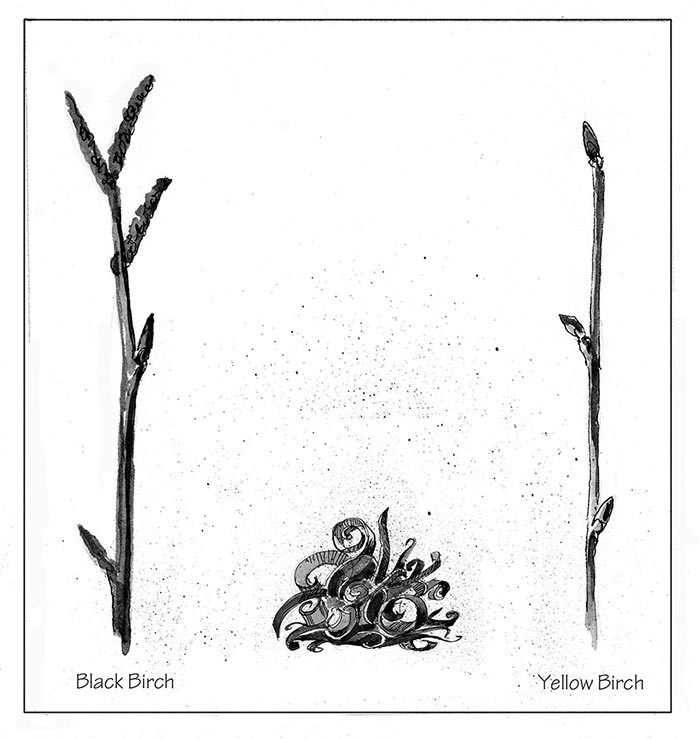
Scratch and then sniff a black or yellow birch twig, and the pleasant aroma will likely put a smile on your face. What you are smelling is oil of wintergreen (methyl salicylate). This chemical compound is present in the inner bark in both species, although typically to a greater degree in black birch. In the trees, as well as several edible berries that grow in our region, the compound serves as a defense against herbivorous insects. Most people, however, enjoy the taste.
You can make a very nice wintergreen-flavored tea from peeled black or yellow birch twigs. I advise against trying to brew this the traditional way, though (i.e., steeping twigs in boiling water). The reason is that oil of wintergreen is volatile and easily driven off by heat, so if you attempt to make tea with hot water, your kitchen will smell great but there will likely be little if any flavor in your tea cup.
Here’s my recommended method: get a couple of quart-sized, wide-mouth Mason jars. Peel about three dozen twigs. A carrot peeler works well for this, but a sturdy pocket knife should also do the trick. Fill the jars with cool-to-lukewarm water, then add as many of the peeled twigs, and the peelings from those twigs, that you have the patience to cram into the jars. The more you put in, the stronger the flavor.
Put lids on the jars and wait. While I used to think that you needed to put the jars in the sun for a day or two, and slow-brew, I have since found that just letting the jars sit around, unrefrigerated, for several hours is enough to ensure strong flavor.
If you’re not a tea drinker, there are other ways to enjoy that wintergreen taste. Simply chewing on a twig is pleasant, and if you’re camping and have forgotten your tooth brush, you can use black or yellow birch as a natural toothbrush and breath freshener. This is not as far a stretch as it sounds: xylitol, another compound in both species, contributes sweetness and reduces the number of bacteria that cause tooth decay. It’s an ingredient that appears in some varieties of toothpastes, mouthwashes and chewing gum.
Birch – not just yellow or black, but other species such as paper birch – can be tapped just like sugar maples. Birch sap typically starts to flow just after the sugar maples have ended their run. Many years ago, I tapped some black birch trees on my family’s land and I got about one gallon of sap per hour per tap from the trees. Unfortunately, birch sap is even more diluted than maple sap, and I had to boil the heck out of it to get anything. What I eventually got didn’t have any oil of wintergreen flavor; it looked and tasted very similar to molasses.
Another use for birch is as a natural pain killer. Methyl salicylate is related to salicylic acid, the active ingredient in aspirin, and it has a similar pain-killing effect (in fact, methyl salicylate is one of the active ingredients in Bengay liniment). So, if you are out in the woods this spring and twist your ankle, consider chewing on a black or yellow birch twig. At the very least, the taste will distract you from the pain, and you’ll limp home with fresh breath.


Discussion *